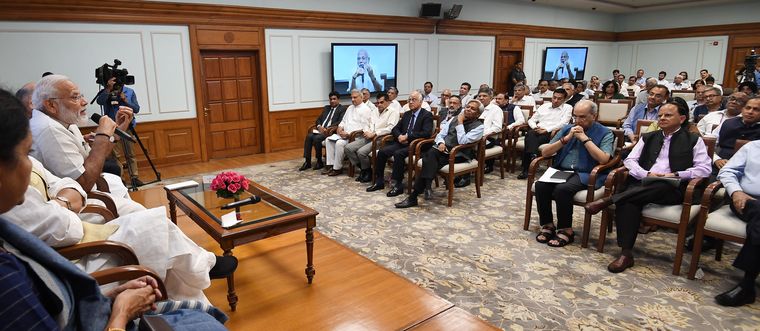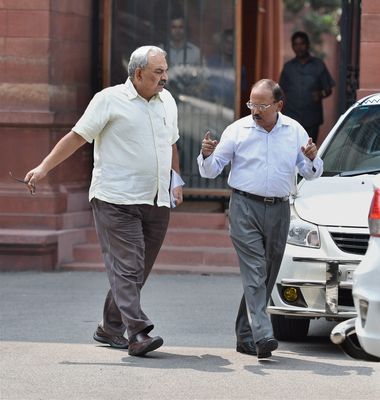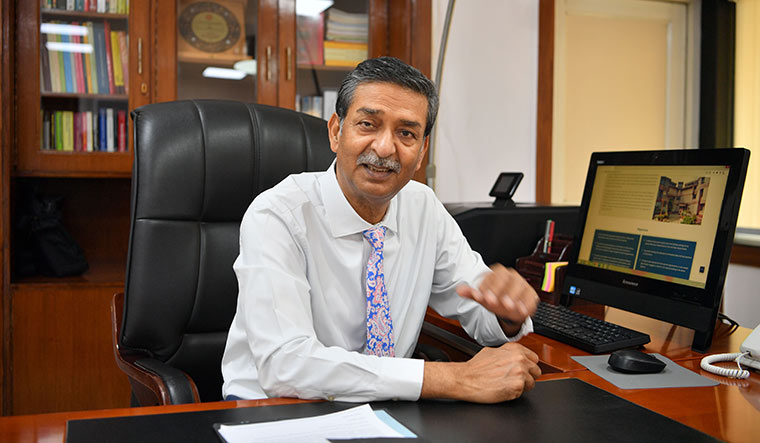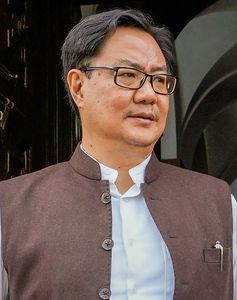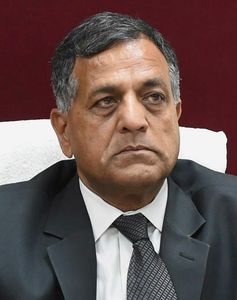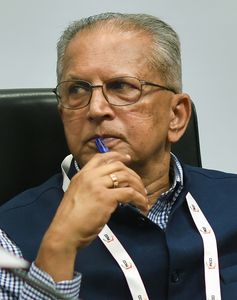While serving as chief minister of Gujarat, Narendra Modi was annoyed when some of his aides complained about a senior bureaucrat’s incompetence and character flaws. Asking them why the concerns were not flagged earlier, he said promotion committee meetings had no meaning if all officers were automatically promoted. Such thoughts perhaps triggered the ongoing remodelling of India’s bureaucratic steel frame.
The most striking feature of the remodelling is the new 360-degree appraisal, which determines the selection of joint secretaries and higher officers at the Centre. This first big change has shaken up a privileged section in the bureaucracy in Lutyens Delhi.
But how did the cosy club come into being? According to Rajiv Mehrishi, a 1978-batch IAS officer who served as finance secretary, home secretary and comptroller and auditor general of India, it was the product of the country’s socialist system. He said: “Accepted first as a policy and then as a constitutional obligation, avowedly for the benefit of the poor, it, in fact, created an elite whose vested interest was to keep talking about the poor and keep benefiting from a system that gave them a privileged existence and a superior social status.”
It created a situation where the levers of power were wielded by an elite club of English speakers, as divorced from real India as any Indian could be. “We have had generations of bureaucrats, judges, doctors and lawyers, almost as if obtaining positions by inheritance had not been discontinued,” said Mehrishi.
The son of an engineer and a homemaker in Jaipur, Mehrishi went to a boarding school at 10, St Stephen’s College in Delhi at 19 and joined the Indian Administrative Service at 23. Most of his friends in the bureaucracy mirror his journey. But Mehrishi feels that a churn has been long overdue. “The government has tried to change the way the system functioned. At the same time, you cannot stop working for five years, saying you are changing the system,” he said. The result was semi-incremental changes, and not radical. “But they are far reaching,” said Mehrishi. ‘”Which is why this group of English speakers, marketing themselves as liberal intellectuals, is suddenly feeling a little disempowered.”
So how has bureaucracy changed?
It is no longer the same as the one that Indira Gandhi tamed or the one that ruled the roost under Manmohan Singh. Today’s civil servants are shedding not only their red beacons, but also the imperial haloes, busy figuring out the next creative solutions if they do not want to be fossilised. In a world where artificial intelligence is gobbling jobs, the time is ripe to find newer ways to deliver government services to citizens. “We are in the process of drawing indices for 2047. At that time, the scenario will be different and technology and artificial intelligence will take over in such a way that human interface will only be a facilitator,’’ Jitendra Singh, minister of state in the prime minister’s office told THE WEEK.
Till 2007, bureaucrats were evaluated on the basis of their annual confidential reports and graded as average, good, very good and outstanding. The ACR has been replaced by the annual performance appraisal report (APAR) to assess performance as well as ‘personality’ traits and domain expertise. Ratings are made on a 0-10 scale based on different parameters. The ACR system was non-transparent and only an adverse remark was shown to the officer. The APAR discloses the entire format and ratings. The 360-degree appraisal came as a ‘supplemental tool’ to the APAR in 2015. In the corporate sector, it is popularly known as the multi-source feedback. The bureaucracy is not used to it.
After the Dev Dutt judgment of the Supreme Court in 2008, which said the ACR of a public servant must be communicated to him, most officers often got scores of 10 or nearly 10. It became difficult to distinguish between the best and the rest. In 2017, the ministry of personnel informed a parliamentary panel that the earlier system of empanelment failed to capture the qualities of integrity and capability. There were situations where officers known to be of doubtful integrity could get empanelled because they had outstanding reports, but those who were actually outstanding got left out as they did not have the ratings. But the 360-degree appraisal is based on feedback from stakeholders like seniors, juniors, peers and serving secretaries.
But critics say that the 360-degree appraisal, though called ‘supplemental tool’, has become the dominant tool. One initial and visible result is that fewer number of officers are getting empanelled for senior posts. For example, the 1989 batch of the Indian Police Service that got empanelled has around 70 officers. But only 32 were found eligible to hold the post of additional director general. And for director general or equivalent posts, only 14 officers were empanelled.
Does this mean only those found efficient are getting empanelled?
“We will have to wait for a few more years to draw a conclusion like this. Fewer number of officers getting empanelled may also mean fewer vacant posts at the rank of director general. So what is the point when you cannot have suitable posts for them,” said a senior officer. On the other hand, the IAS, which still enjoys a hegemony over other services, is making it to the top faster. An IAS joint secretary with three years or more experience is being promoted as additional secretary. The positive side is that it is creating a pool where younger officers can reach top positions faster so that they have more years in service. It is also cutting the seven-layered British-styled system of governance―the movement of files from section officer upward to under secretary, deputy secretary, director, joint secretary, additional secretary and secretary.
Across Central ministries, at least one layer has been shed after some joint secretaries got promoted to additional secretaries. “The AS is doing the work of the JS. So while the rank has changed, the work is the same,’’ said an additional secretary level officer. But with promotion in hand, the bureaucrats cannot be seen complaining.
Civil servants are recruited to Central services through the Union Public Service Commission, but are allocated to states, which become cadre-controlling authorities. Everyone who comes to serve at the Centre is on deputation for a specific period. This practice was meant to bring the best talent to the Central government, keep the bureaucracy politically neutral and give officers exposure benefiting both the Centre and the states.
Critics of the 360-degree method call it opaque and arbitrary, and say it is causing unease among officers in opposition-ruled states who want to move to Delhi. But an officer from the department of personnel and training (DoPT) said that for those who had nothing to hide, there was no reason to worry. “There is no way that any information will remain hidden after the background assessment. Any corrupt practices or negative perceptions will come out,” said the officer. But there are many cases which show that the 360-degree appraisal needs a bit more fine-tuning.
For example, an officer who was not empanelled for director general level post at the Centre got it after he went back to the state as its police chief. In another case, an IPS officer of the Union territories cadre, who served as joint secretary in the Union home ministry for five years, was not empanelled. But when he went back to his cadre, he was appointed to a DG-level post. Untimely removal of officers from top posts is another issue and it has prompted the UPSC to ask states to follow the order by the Supreme Court in 2006 on police reforms to ensure fixed tenures and insulate officers from political pressure.
The churn in the bureaucracy has also hit the ‘generalist’ IAS officers whose arena is being vastly limited if they do not qualify as domain experts. But this is not the first time the IAS is facing competition on its turf. Non-service officers who gave the IAS a scare in the past include former prime minister Manmohan Singh, economist Montek Singh Ahluwalia, former finance secretary Vijay Kelkar, agronomist M.S. Swaminathan and former RBI governor Bimal Jalan. Over the years, there has been a substantial increase of personnel from services other than the IAS, especially at the joint secretary rank.
“This is a welcome trend as it increasingly defuses the impression that the IAS is a kind of overlord when it comes to policy planning and implementation,” said former national security adviser and IPS officer M.K. Narayanan. “The proximity to policy makers like prime ministers, chief ministers and other ministers gives the IAS an advantage, which, at times, is misunderstood as giving the IAS a superior standing vis-à-vis other services.”
Until a few years ago, when the subjects were not so technical or did not require much legal scrutiny, the IAS could manage any job. Now, departments like telecom, health, environment, forest and waste management are highly technical, and experts are proving to be better at these jobs. It forced the government to open the door for lateral entrants in senior positions―seven in 2020 and 31 in 2021―appointed on three-year contracts, extendable by two more years.
But the idea has not worked well completely. Some quit, others expressed dissatisfaction and those in service admit that they are treated like outsiders. “We need to experiment more with the lateral entry system to make it work. The director-level officers can be sent to private sector, junior officers can be sent to IIMs (Indian Institute of Management) for six months training,” said Captain (retd) Raghu Raman, the founding CEO of the National Intelligence Grid, set up in the aftermath of the 26/11 attacks.
An element of mistrust remains between government officers and the private sector, which creates an uneasy working environment for lateral entrants or contractual employees. There are three reasons for this, said Raman. First, in the private sector, top performers are rewarded exponentially for successes, while losing the job would be the worst outcome for a failure. For government officers, there is no system to materially reward an extraordinary performer, but a risk taker could be embroiled in a departmental inquiry or even face jail time.
The private sector is also outcome-oriented, allowing discretion, but the government, dealing with sovereign funds, has a higher scale of accountability. The procedures become more important than outcomes sometimes. Then there is an element of colonial vestige. “England ruled India with a few thousand British, [with] the bureaucracy manned by Indians till its last-mile connectivity. The almost feudal status of bureaucracy is the reminder of that legacy,” said Raman.
Similarly, the private sector suffers from a stereotype of an extractive capitalism which is treated with disdain by the bureaucracy. But the private sector is the real engine of economic growth. “The government should facilitate this cross-pollination,” Raman said. “A common transferable pool of officers can be created to move between the government and the private sector.” A mix of the best of both worlds is rare. NITI Aayog CEO Parameswaran Iyer, who quit IAS in 2009, but made a lateral entry in 2016 to head the drinking water and sanitation department, belongs to this group.
Around the world, officers are allowed to leave government jobs and return with more experience and expertise. Take the example of US Secretary of State Antony Blinken, who served as deputy national security adviser and deputy secretary of state under president Barack Obama. After serving Obama, he moved to the private sector by starting a consulting firm, only to return as the number one diplomat in the Biden administration. A seamless osmosis also happens in the UK’s GCHQ (Government Communications Headquarters) where officers who quit get hired on government projects. Similarly, intelligence agencies regularly hire talent from unconventional backgrounds. “This is unthinkable in India. This shows how deep the mistrust is between the private and the public sector,’’ said Raman.
Unique as it is, the tectonic shift in Delhi’s power corridors is expected to change status quo. “The bureaucracy does not work in isolation. The elected representatives or leaders determine how efficient it can be. The same bureaucracy can do wonders under a good leadership. This is the main change that has come in,’’ said Union Law Minister Kiren Rijiju.
Also in the works is an inclusive approach within the bureaucracy to bring officers from services like revenue, forest, audit and accounts, railways and other allied services to serve in Central ministries. As on October 2, of nearly 90 secretaries, 69 are IAS officers. The trend cannot be bucked so long as one service gets quicker promotions. The minimum two-year gap between the IAS and other services in empanelment exists even today. There are plans to do away with service-wise empanelment and move towards a batch-wise procedure. “After all, all civil servants clear one exam and join the services together,” said a government official.
The focus on revamping the bureaucracy has made the government appoint a forest service officer, Bharat Lal, as director general of the National Centre for Good Governance. His mandate is cross-country experience sharing and creating a national repository of best practices. Lal said the government was giving an opportunity to anyone who performed and had integrity beyond doubt. “Merit and character are weighed above everything else,” he said.
The choice of non-IAS officers being brought to Delhi has also been interesting. Central Vigilance Commissioner Suresh N. Patel is not from the civil services, he was former managing director of Andhra Bank. Sandip Pradhan, director general of the Sports Authority of India, was handpicked as Khelo India CEO. Pradhan, an IRS officer of the 1990 batch, was noticed for his good work when he headed the Sports Authority of Gujarat. Another key Modi aide was the late Jagdish Thakkar, a low-profile public relations officer originally from the Gujarat information department.
Bureaucrats coming to Delhi have noticed a change in the working environment. While some find the gaze stifling, others find the environment clearer. “It is a result-oriented government,” said D.K. Pathak, former director general of the Border Security Force. Principal secretary to the prime minister P.K. Mishra, his predecessor Nripendra Mishra, National Security Adviser Ajit Doval and External Affairs Minister S. Jaishankar who earlier served as foreign secretary are examples of merit and delivery.
But the crop of bureaucrats looking for challenging assignments and are not afraid to record their dissent is thinning, not just at the Centre, but in the states as well. Uttar Pradesh, for instance, recently saw the resignation of G. Srinivasulu, special secretary in the revenue department. The 2005-batch IAS officer cited health reasons for his decision. Four others sought voluntary retirement before him.
The permanent nature of the government job, too, is no longer a lure. The DoPT has tweaked rules to weed out non-performers who have completed 30 years of service or crossed the age of 50. The government wants this rule to be invoked more forcefully, but the implementation remains mild to moderate. Till December 2020, the government sent 300-plus civil servants home.
The number of vacancies in the Central government has gone up, but this change is being attributed to reasons like slow promotions and the reluctance of officers in opposition-ruled states to move to Delhi. Officers serving in developed states like Maharashtra, Tamil Nadu and Karnataka, too, are reluctant to take up Delhi postings. The number of women is bureaucracy is still low. An effort is being made to give women key posts. “There is disparity when it comes to the number of women in bureaucracy, especially IPS, but the trend is changing. Now we have a lot more women officers and the numbers are growing,’’ said Manjari Jaruhar, the first woman IPS officer from Bihar.
The biggest colonial hangover, however, continues to be the adversarial nature of the bureaucracy. It is still reluctant to think out of the box; if the diktat comes from above, most put it in the file and process it. It makes bureaucracy susceptible to pressures of the ruling dispensation.
The other bane of bureaucracy is the sense of entitlement. The constant need to grab a post-retirement opportunity leads to the creation of ‘parking lots’ as they are often called. The Modi government trimmed bodies like the National Disaster Management Authority, which accommodated a large number of retired bureaucrats when the Congress was in power, but constant checks and balances are needed to achieve better results.
“Before blaming the system, we also need to record where the bureaucracy failed in its role,” said Amitabh Mathur, an IPS officer who retired from the Research and Analysis Wing. “The bureaucrats’ attitude is that they are obliging people in their decision-making, whereas they are only doing their jobs,” said Mathur.
So, are the bureaucrats able to function without fear or favour? The perception of fear is because of the constant monitoring by the PMO. As one senior bureaucrat explained, “There used to be a lot of consultations earlier, but I am not sure if it is more meaningful today. But the good part is that secretaries who used to boss around earlier are on their toes, giving presentations and being quizzed.’’ The Right to Information Act, too, has impacted file notings, said another officer, as bureaucrats are reluctant to record jarring opinions. The overly cautious approach threatens to slow the pace of governance.
Often, bureaucrats need to display great skills to keep their political masters happy, but without breaking rules and norms. “When I was under-secretary in CBDT (Central Board of Direct Taxes), I noticed that six or seven IRS officers had not cleared the department examination. This meant their services could be terminated,” said K.V. Chowdhary, who served as Central Vigilance Commissioner. Despite pressure from the finance minister, Chowdhary refused to bend the rules, but he suggested a way out. “I said the minister can amend the rule.” Subsequently, the officers were given another chance to write the exam.
Ashok Lavasa, former election commissioner, who was in the news for his dissenting opinion over the Election Commission’s decision to give the prime minister and the home minister a clean chit for an alleged model code violation in 2019, said the role of the civil servant was both advisory and executive, but in a democracy the final decision was the prerogative of the elected representative. “The civil servant should have the humility to be overruled. But he must play his role of adviser, because if he does not do that, he loses the right to criticise,” said Lavasa, who is serving as vice president of the Asian Development Bank after his resignation from the Election Commission.
The old practice of moving files in circles is over. But working in silos still results in important legislation getting delayed inordinately. “There is a good talent pool within the government,” said former home secretary G.K. Pillai. “The Swachh Bharat Mission, the renewable energy programme, UPI for financial inclusion and the building of more national highways show that. The bureaucracy needs to constantly innovate.”
Narayanan said change in bureaucracy has taken place over years and was not limited to the past eight years alone. “Across the world, and also across centuries, bureaucracies have tended to change their shape and colour, depending on the circumstances, including shifts in ideology and practices. The changes that have taken place in the bureaucracy in India broadly reflect this general tendency, with certain spikes to accommodate the political and personal predilections of those in office at that time.”
The fact, however, remains that the imperial services might have been handed down by the British, but it is now an Indian system with its pen and might. All it needs is to remove any extra baggage which the commonsensical bureaucrat will know best.


